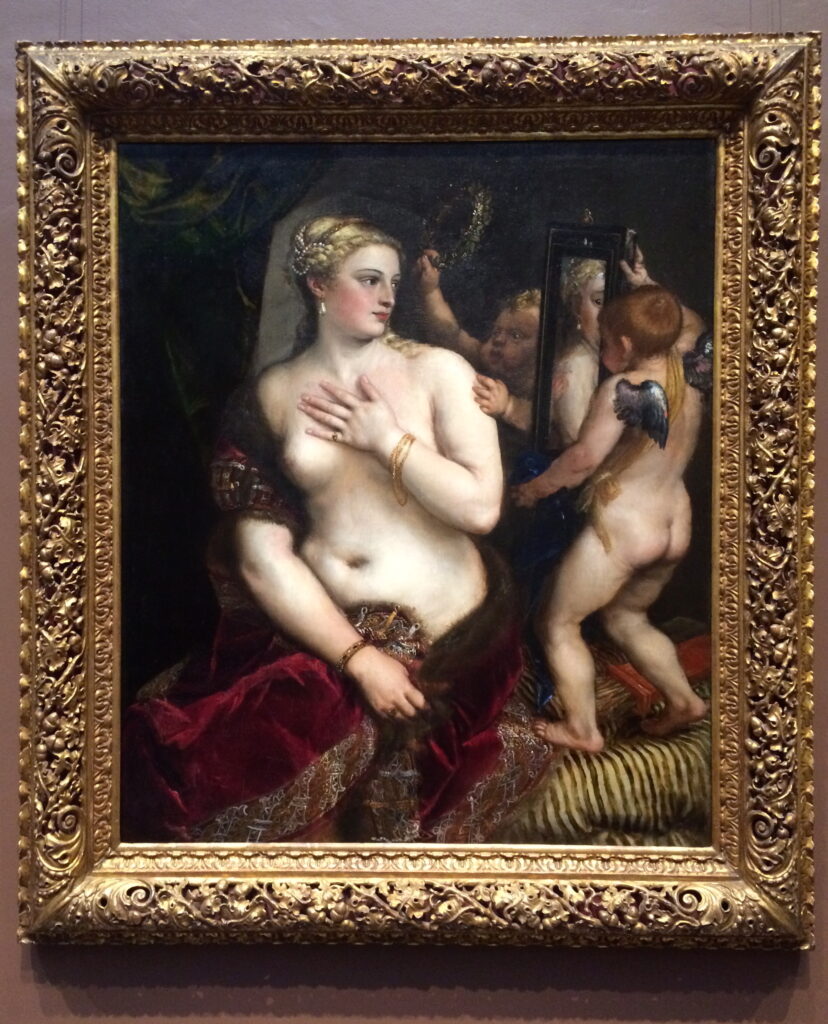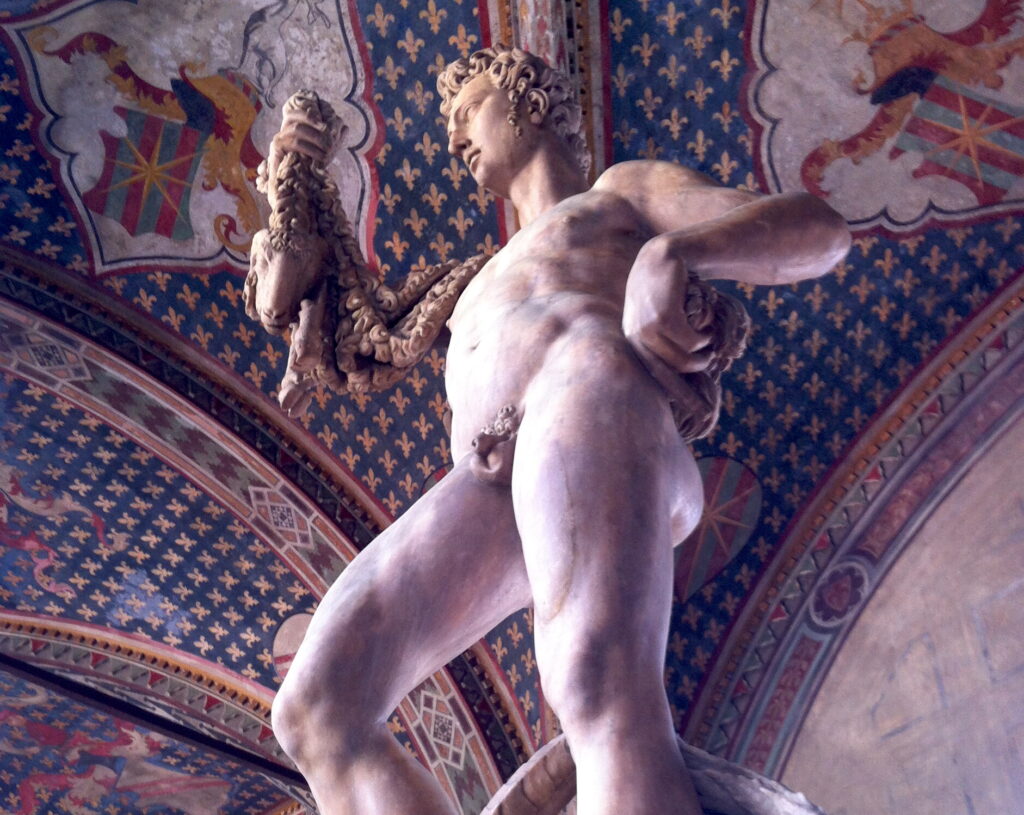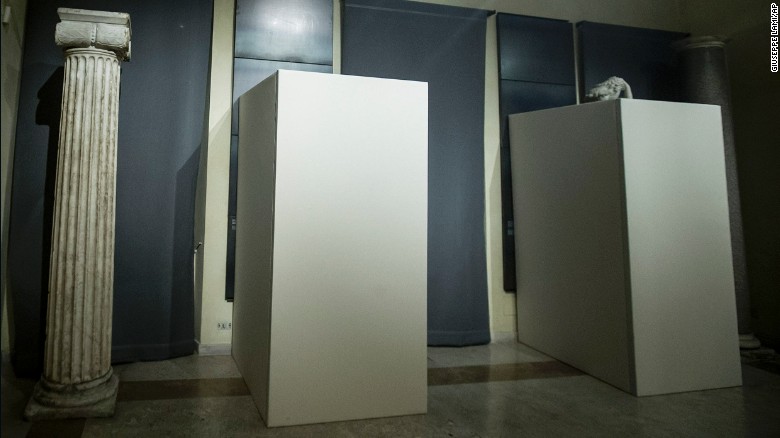There comes a time in my art room when we have to have “The Big Talk.”

It’s a talk my students know is coming from the whispered rumors that circulate the hallways.
Of course, I’m talking about nudity in art.
You might think middle school—a time rife with the three “G’s” of gossip, giggles, and goofiness—is a terrible time to try and discuss this mature topic. However, I wholeheartedly disagree.
Kids love to be treated like adults. It makes them feel important, capable, and trustworthy. If handled in the right way, this discussion can do just that.
In other words, the success or failure of this discussion lies with us, the educators. So, how can we make sure it goes smoothly?
1. Let your students know you trust them.
Preface the delicate discussion with the fact that this is a conversation for mature students only, students that can be serious and sophisticated. Make it dramatic, pause, and change the volume or tone of your voice… it adds gravitas. Immediately, they will sit at attention, eager to hear what you have to share, showing off their very sophisticated manners. It works every time.
2. Discuss the difference between “naked” and “nude.”
I have the talk with my students before they dive into their annual artist research project. Of course, during their exploration, they will, in most cases, come across some type of nudity in art. Whether it be the slightly-exposed breast in Botticelli’s The Birth of Venus or the enormity of Michelangelo’s marble David bearing down on them, it’s all nudity. The Venus and David are certainly not NAKED.
“Naked” implies a certain element of surprise, an accidental viewing and possibly even embarrassment. You are accidentally caught naked getting out of the shower when your mom tries to enter the bathroom and you weren’t expecting it. (Insert riotous laughter here). You are not posing waiting for her to sculpt you in the nude sans towel.
This example highlights the difference nicely. Nudity is intentional. It has a purpose and it is not usually vulgar. While there certainly are examples to disprove this claim, I intentionally do not provide the students with artists that focus on risqué or indecorous content in their work.

3. Explain why artists study nudes and how different people feel about it.
Another thing that helps is to explain that nude models serve as subjects for artists learning to better paint and sculpt the human form. It’s also nice to discuss the idea of nudity in art from a historical and cultural perspective; what is covered and when changes based on culture, religion, and time period.
For example, in 1857, the Grand Duke of Tuscany quite generously gifted Queen Victoria with a cast of David by Michelangelo only to find she was shocked by the nudity. She immediately turned the statue over to a museum and ordered that a “proportionally accurate fig leaf” be created and hung over the offending area to protect the modesty of women visitors. Recently in Rome, statues displaying nudity were covered with large white panels when the President of Iran visited (see image below). Many Italian art lovers took to social media to express their outrage.

4. Have students censor their own art to see how it feels.
To hammer home your point, lead students through the quick exercise below.
- Group students into partners.
- Have each partner choose a piece of art they feel proud of. Then, have them switch pieces.
- Using small scraps of black construction paper, have students censor parts of each other’s work.
- Ask students how they feel. Is their piece whole, or has it been changed by their neighbor’s action? Many students will express feeling outraged.
It becomes clear that censoring even small parts of an artwork changes the piece without the artist’s consent. What the artist chooses to depict is what they want the viewer to see.
5. Let students know it’s OK not to feel comfortable with nudity.
Of course, I do not insist students be comfortable with the nudity. I make it very clear that is their prerogative. If a student wishes to avoid it in their presentations, they can. I simply insist they acknowledge the difference between naked and nude. It’s an important distinction.
Worried about parent reactions?
While I’ve never once fielded a phone call or had a parent concerned after this discussion, I can imagine some teachers might be apprehensive. Consider this: what middle school student has not watched any number of pop-stars writhe around with little to no clothing on during primetime television, to speak nothing of what children have access to on the web? We are not condoning bad or lewd behavior. We are sharing masterpieces of art that enlighten and enrich our world.
This is about art that fills museums, which have no “R” ratings. This is for everyone. Learning how to discern the difference between artistic nudity and crass nakedness is a critical step towards ensuring that aware children become cultured adults.
Do you (or would you) address this issue in your classroom? What hints do you have to ensure it goes well?
Do you agree or disagree with the idea that omission or censoring is an affront to an artist and their work?
Magazine articles and podcasts are opinions of professional education contributors and do not necessarily represent the position of the Art of Education University (AOEU) or its academic offerings. Contributors use terms in the way they are most often talked about in the scope of their educational experiences.





